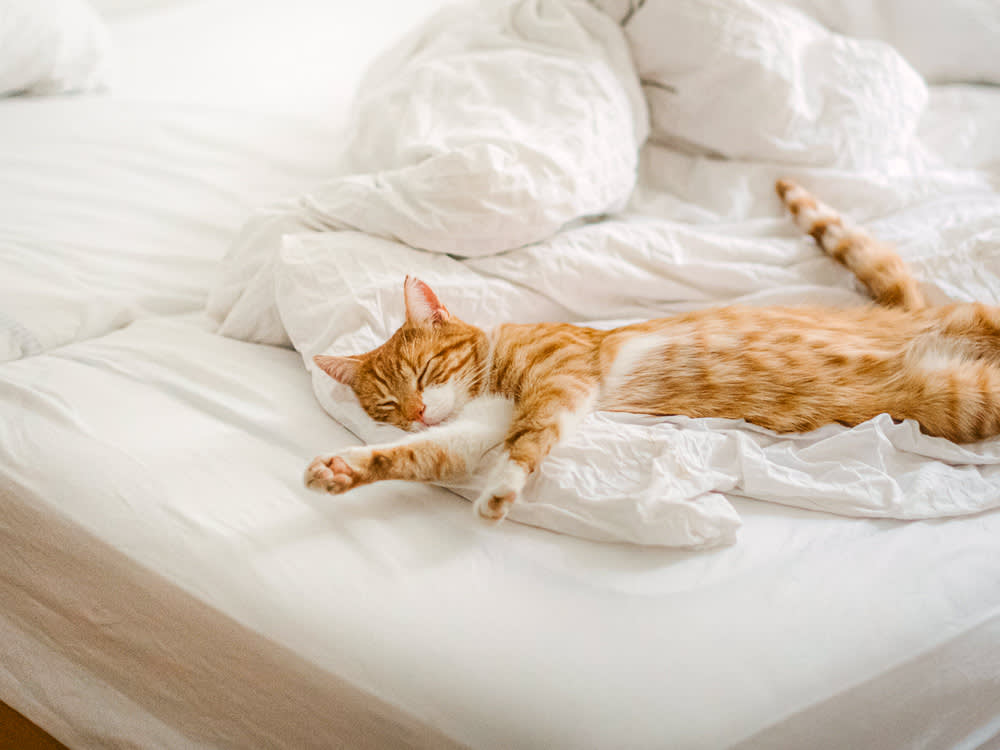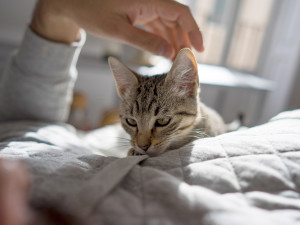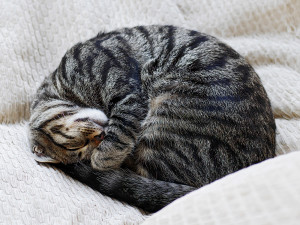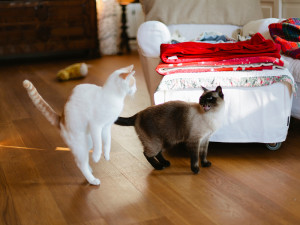Your Sleeping Cat Is Twitching So Much They Should Be a Gamer
Why do they do it? A vet on the top three reasons your cat twitches in their sleep – from sweet dreams to scary spasms

share article
Cats excel at a lot of things: effortlessly leaping on to high bookshelves, stalking (sometimes imaginary) prey, committing to time-intensive grooming routines – and sleeping. Cats are really, really good at sleeping. They even have a type of nap named after them.
Cats can sleep for an enviable 15-plus hours a day. And because they’re your pet and not your partner, you can watch them while they sleep without it being the slightest bit creepy. During these totally-not-creepy staring sessions, you’ve probably caught your cat twitching while they snooze. But have you ever wondered why they do it? We dug into the potential reasons behind this common cat behaviour.
1. Dreams
Just like people, cats go through rapid eye movement (REM) and non-REM cycles when they sleep. During REM sleep, the body is relaxed, but the brain is actively processing the day’s events. This is the stage when cats dream – and when you’re most likely to see them twitching, moving their paws or squeaking. Cats can enter REM sleep every 25 minutes (unlike the 90-minute cycles humans experience), so you may catch them dreaming even during short catnaps. Twitching during dreams is normal behaviour and not something to be worried about. That’s the good news. The not-as-good news is that there may be other non-dream-related reasons for your cat to twitch while sleeping.
2. Allergies and fleas
“Twitching during sleep, followed by waking and immediately grooming, could indicate itchy skin related to fleas, allergies, matted fur or a skin infection,” says Dr Shines. “Make sure to check your cat routinely for fleas and keep their coat in good condition.” If you see your cat twitching their ears specifically, that could indicate ear mitesopens in a new tab or an ear infection. “You may notice that the twitching is followed by scratching or rubbing at the ears,” Dr Shines adds. “Ear mites and infections will often cause a build-up of waxy debris in the ears, so check your pet’s ears regularly.”
3. Seizures
On a slightly scarier note, cats who experience seizures can exhibit signs, such as twitching, shaking, spasms and tremors. Seizures are often timed with a change in brain activity, and that includes falling asleep or waking up. In addition to twitching during a seizure, a cat’s limbs might go rigid, and they may lose control of their bowel or bladder. If you suspect your cat is having seizures, contact your vet right away so they can begin investigating any underlying health issues.
Other triggers that could cause a cat to shake or twitch are pain, stress, hypoglycemia (low blood sugar), or low or high body temperatures. The bottom line: if you’re not sure if your cat’s twitching is normal dreamy-time activity, or a medical issue that needs attention, check in with your vet. They’re your best resource for keeping your cat happy and healthy enough to enjoy their 18 hours of daily sleep.

Kate Sheofsky
Kate Sheofsky hails from San Francisco, where she developed a love of writing, Giants baseball, and houses she can’t afford. She currently lives in Portland, OR, and works as a freelance writer and content strategist. When not typing away on her laptop, she enjoys tooling around the city with her two rescue pups searching for tasty food and sunny patios.



